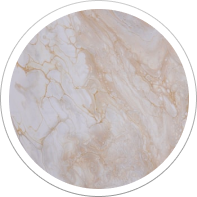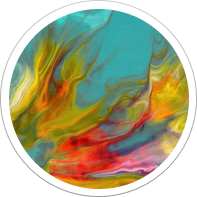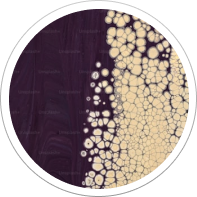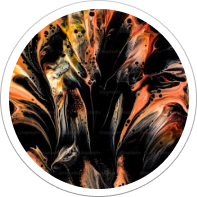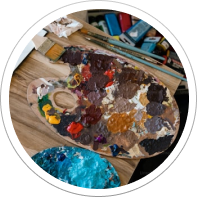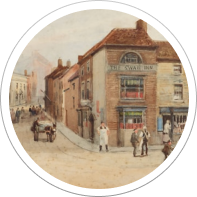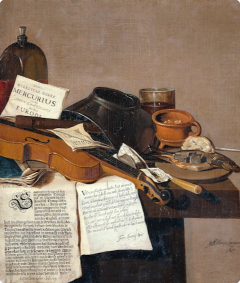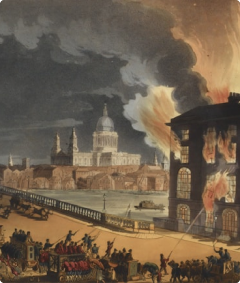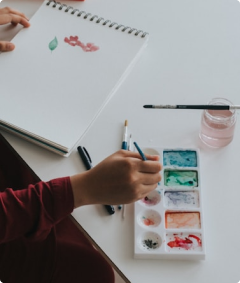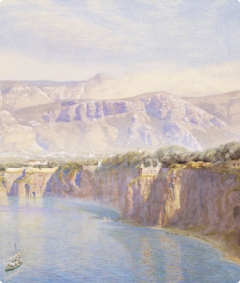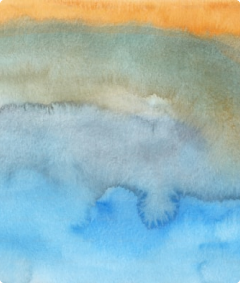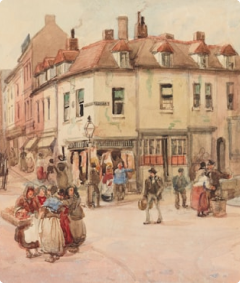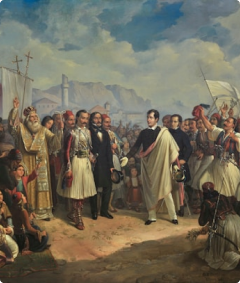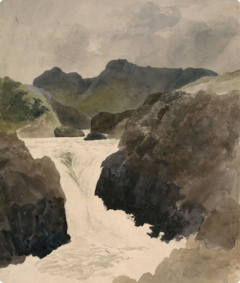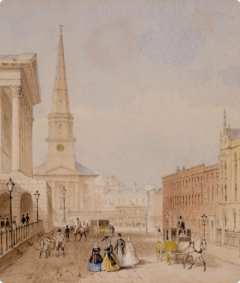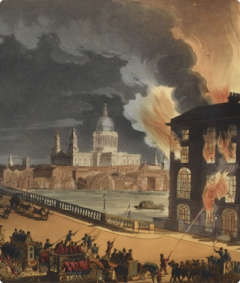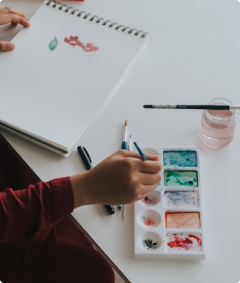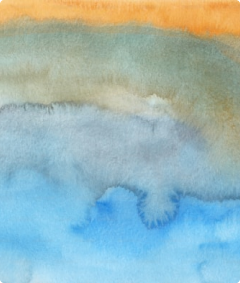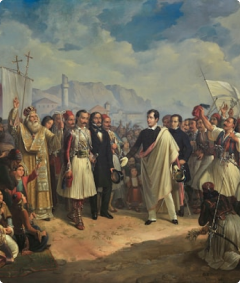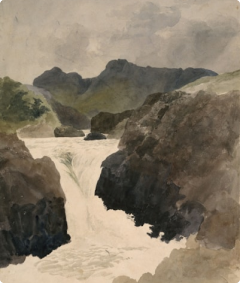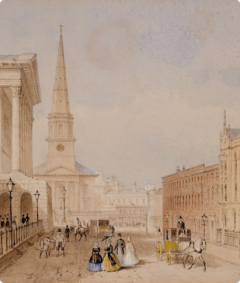
Top Seller
Canvas Prints & Photo Tiles, Wall Art from Jodello
Transform your space with Jodello’s canvas prints, photo tiles, and custom wall art. Turn memories and designs into stunning decor that reflects your unique style.
Get Started
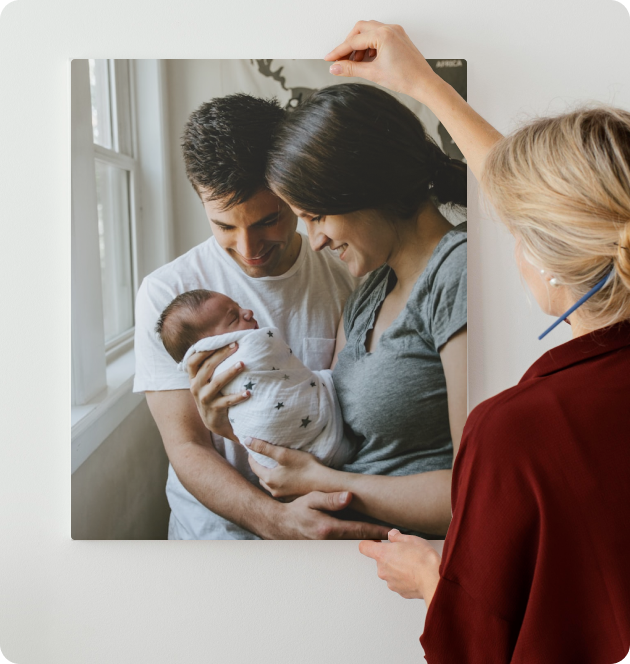






How It Works:
Transform your space with Jodello’s canvas prints, photo tiles, and custom wall art.

1. Add Photos
Upload your favorite moments.

2. We Deliver
Get your custom prints fast.

3. You Stick
Peel, stick, and transform your walls effortlessly.

Featured Categories
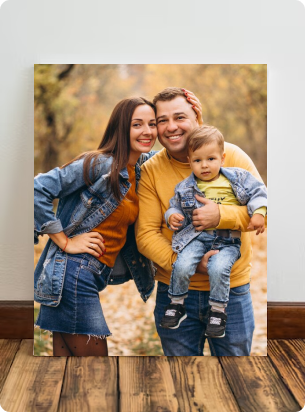
Your Cherished Moments, Beautifully Displayed
Transform your space with top-quality, customizable canvas prints. From cherished moments to stunning artwork, Jodello offers a seamless way to craft beautiful pieces that showcase your unique taste.
Get Started
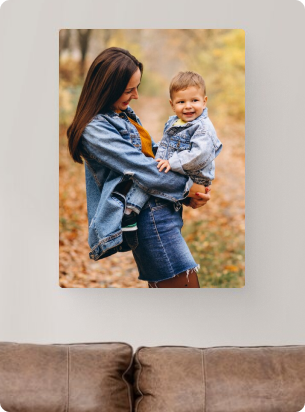
Why You'll Love Jodello

Seamless Installation
Easy-to-mount prints, no tools needed

No Damage, No Hassle
Sticks securely, removes cleanly

Endlessly Customizable
Designs that fit your style effortlessly
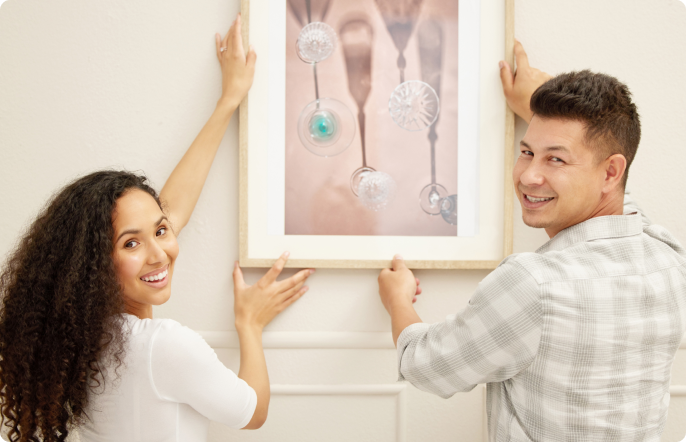
Customer Testimonials
Discover the conversations happening around our brand and see what our customers are saying about their experiences with us.
"I recently purchased a stunning canvas from Jodello, and I couldn't be happier with my choice! The vibrant colors and exquisite detail have truly transformed my living room. “


Liam Carter
"I recently purchased a stunning canvas from Jodello, and I couldn't be happier with my choice! The vibrant colors and exquisite detail have truly transformed my living room. “


Liam Carter
"I recently purchased a stunning canvas from Jodello, and I couldn't be happier with my choice! The vibrant colors and exquisite detail have truly transformed my living room. “


Liam Carter
FAQs
Easy-to-mount prints, no tools needed
Easy-to-mount prints, no tools needed
Easy-to-mount prints, no tools needed
Easy-to-mount prints, no tools needed
Easy-to-mount prints, no tools needed
Easy-to-mount prints, no tools needed
Easy-to-mount prints, no tools needed
Easy-to-mount prints, no tools needed
Multi Panel Wall Art Prints: Transforming Your Space with Artistic Excellence
Multi-panel canvas printing represents a revolutionary approach to wall decoration that transforms ordinary photographs and artwork into extraordinary visual masterpieces. This innovative printing method utilizes multiple canvas pieces to create a cohesive, dramatic display that captures attention and adds sophisticated depth to any interior space. Unlike traditional single-canvas prints, multi-panel compositions offer dynamic visual storytelling that guides the viewer's eye across interconnected segments, creating an immersive experience that single prints simply cannot achieve.
The concept behind multi-panel canvas printing stems from ancient artistic traditions where artists would create expansive works across multiple surfaces. Today's digital printing capabilities have democratized this artistic approach, allowing homeowners, businesses, and art enthusiasts to commission spectacular displays that rival gallery installations. Each panel serves as both an independent element and an integral component of the larger composition, creating visual rhythm and movement that breathes life into static wall spaces.
Modern multi-panel canvas printing encompasses various configurations, from simple diptychs featuring two panels to elaborate arrangements spanning five or more canvases. The segmentation creates natural pause points that allow viewers to appreciate both individual details and the overarching composition. This approach particularly excels when applied to panoramic landscapes, architectural photography, abstract compositions, and portraits where different elements can be strategically distributed across panels to maximize visual impact.
The printing process itself involves sophisticated digital reproduction techniques that ensure color consistency and seamless visual flow between panels. Professional printers carefully calibrate each canvas to maintain uniform saturation, contrast, and brightness across the entire installation. This meticulous attention to detail ensures that when properly mounted, the panels create an illusion of continuity that appears almost magical in its execution.
Understanding the Aesthetic Philosophy of Segmented Canvas Art
The aesthetic appeal of multi-panel canvas printing lies in its ability to create visual tension and release through strategic composition breaks. Each gap between panels serves as a compositional element that can enhance the artwork's emotional impact. This segmentation mimics the way human vision naturally processes complex scenes, allowing for more comfortable viewing of large-scale imagery while maintaining the grandeur of expansive compositions.
Contemporary interior designers increasingly favor multi-panel installations because they offer flexibility in arrangement and can be customized to fit specific architectural constraints. The modular nature of these installations allows for creative positioning that can emphasize room features, create focal points, or establish visual balance with existing furnishings. Unlike rigid single-canvas prints, multi-panel systems can be adjusted, rearranged, or even partially relocated to accommodate changing design needs.
The psychological impact of multi-panel canvas displays cannot be understated. Research in environmental psychology suggests that segmented visual experiences create more engaging and memorable interactions than monolithic displays. Viewers tend to spend more time examining multi-panel compositions, discovering new details and relationships between segments that might be overlooked in traditional formats. This extended engagement transforms wall art from passive decoration into active visual exploration.
Color relationships between panels offer another dimension of aesthetic sophistication. Skilled designers can manipulate how colors flow from one panel to the next, creating subtle gradations or dramatic contrasts that enhance the overall composition. Warm tones might gradually transition to cooler hues across panels, or complementary colors might be strategically placed to create vibrant visual dialogues between segments.
The interplay of light and shadow across multiple canvases adds temporal dimension to static imagery. As lighting conditions change throughout the day, different panels may be emphasized or subdued, creating an ever-evolving display that remains fresh and engaging. This dynamic quality makes multi-panel installations particularly suitable for spaces where people spend extended periods, as the artwork continues to reveal new aspects over time.
Texture variation between panels can further enhance the sensory experience. Different canvas weaves, printing techniques, or finishing treatments applied to individual panels create subtle tactile differences that add depth and sophistication to the overall installation. These textural variations catch and reflect light differently, contributing to the dynamic quality that makes multi-panel displays so compelling.
Selecting Perfect Imagery for Panel Division
Choosing appropriate imagery for multi-panel canvas printing requires careful consideration of compositional elements, visual flow, and storytelling potential. Not every photograph or artwork translates effectively to segmented display, and understanding which images work best can mean the difference between stunning success and disappointing results. The most successful multi-panel compositions feature imagery with natural division points, flowing elements, or repetitive patterns that can be strategically interrupted and resumed across panel boundaries.
Panoramic landscapes offer perhaps the most intuitive application for multi-panel treatment. Mountain ranges, seascapes, cityscapes, and natural vistas naturally lend themselves to segmentation because the eye expects continuity across horizontal expanses. The key lies in identifying transition points that feel natural rather than arbitrary. Rocky outcroppings, architectural elements, cloud formations, or vegetation changes can provide logical break points that enhance rather than disrupt the compositional flow.
Portrait photography presents unique challenges and opportunities for multi-panel presentation. While traditional portrait compositions rarely benefit from segmentation, environmental portraits, group photography, and artistic interpretations can be dramatically enhanced through careful panel division. The human face requires particular sensitivity in segmentation, as improper breaks can create disturbing visual disruptions. However, when executed skillfully, multi-panel portraits can create compelling narrative depth and emotional intensity.
Abstract artwork and graphic designs often excel in multi-panel formats because they are not bound by realistic representation constraints. Flowing patterns, geometric progressions, color gradients, and conceptual compositions can be designed specifically to take advantage of panel breaks. These interruptions can become integral design elements that enhance the artwork's rhythm and visual impact rather than merely accommodating practical display requirements.
Architectural photography benefits significantly from multi-panel treatment, particularly when showcasing expansive structures, intricate details, or dramatic perspectives. Building facades, interior spaces, and structural elements can be distributed across panels to emphasize scale, proportion, and architectural relationships. The segmentation can guide viewers through complex spatial relationships while highlighting specific design elements within the broader context.
Natural history subjects, including wildlife photography, botanical studies, and geological formations, offer rich possibilities for multi-panel presentation. The inherent complexity of natural subjects provides numerous opportunities for meaningful segmentation that can enhance scientific accuracy while creating visually stunning displays. Seasonal progressions, life cycles, and environmental relationships can be eloquently expressed through carefully planned panel arrangements.
Sports and action photography can benefit from multi-panel treatment when the imagery captures movement, progression, or multiple participants. Sequential action shots can be arranged across panels to suggest motion and time progression, while complex sporting events can be broken down into component actions that tell complete stories. The dynamic nature of sports imagery naturally complements the energetic feeling that multi-panel displays create.
Strategic Placement and Spatial Considerations
The success of any multi-panel canvas installation depends heavily on understanding spatial relationships within the intended display environment. Room dimensions, lighting conditions, viewing distances, and architectural features all influence how panel arrangements should be configured for maximum visual impact. Professional interior designers recognize that multi-panel installations must be conceived as integral architectural elements rather than mere decorative additions.
Wall proportions play a crucial role in determining optimal panel configurations. Rectangular walls with significant horizontal expansion naturally accommodate linear panel arrangements, while square or vertical spaces may benefit from stacked or clustered configurations. The golden ratio principle can guide panel sizing and spacing decisions, creating harmonious proportions that feel naturally pleasing to viewers. Understanding these mathematical relationships ensures that installations appear intentional and professionally executed rather than arbitrary or accidental.
Viewing angles and distances must be carefully considered when planning panel arrangements. Installations viewed primarily from a central position can utilize symmetrical arrangements that create balanced compositions, while hallway installations viewed from multiple angles may require asymmetrical configurations that remain visually coherent from various perspectives. The optimal viewing distance influences panel sizing, spacing, and detail level, ensuring that the installation remains engaging and legible from typical viewing positions.
Lighting considerations encompass both natural and artificial illumination sources. Windows, skylights, and artificial lighting fixtures create varying illumination patterns throughout the day, and successful installations account for these changes. Panels can be positioned to take advantage of favorable lighting conditions while minimizing glare and shadow issues that might compromise visibility. Strategic positioning can even use lighting changes as compositional elements that enhance the installation's temporal dimension.
Furniture placement and room function significantly impact installation success. Multi-panel displays must harmonize with existing furnishings while maintaining their visual prominence. Seating arrangements, traffic patterns, and functional requirements should be considered during the planning phase to ensure that the installation enhances rather than conflicts with room usage. The installation should feel integrated with the space rather than imposed upon it.
Architectural features such as doorways, windows, built-in elements, and structural details provide both opportunities and constraints for multi-panel installations. Skilled designers can use these features as compositional elements, creating relationships between artwork and architecture that strengthen both elements. Corner installations, alcove treatments, and feature wall presentations each require different approaches to panel arrangement and spacing.
Ceiling height influences the scale and proportion relationships within multi-panel installations. Higher ceilings can accommodate larger panels and more dramatic vertical arrangements, while standard residential ceiling heights may require more restrained approaches. The relationship between panel height and ceiling elevation affects the installation's visual weight and presence within the space.
Professional Printing Standards and Quality Considerations
Multi-panel canvas printing demands exceptional technical precision to achieve seamless visual continuity across separate pieces. Professional printing facilities employ sophisticated color management systems, high-resolution printing equipment, and specialized canvas materials to ensure consistent results that meet exacting quality standards. Understanding these technical aspects helps customers make informed decisions and set appropriate expectations for their installations.
Color accuracy across multiple panels represents one of the most challenging aspects of multi-panel printing. Professional printers utilize calibrated monitoring systems, standardized color profiles, and controlled printing environments to minimize color variations between panels. The printing process must account for canvas texture, ink absorption characteristics, and environmental factors that can influence color reproduction. Advanced printers employ spectrophotometer measurements and color correction algorithms to ensure that colors remain consistent even when panels are printed in separate batches.
Canvas material selection significantly impacts the final appearance and longevity of multi-panel installations. Premium cotton canvases offer superior ink absorption, dimensional stability, and archival longevity compared to synthetic alternatives. The canvas weave pattern affects how light interacts with the printed surface, influencing color saturation and texture appearance. Professional printers stock multiple canvas options to accommodate different aesthetic preferences and functional requirements.
Resolution requirements for multi-panel printing often exceed those of single-canvas projects because viewers may examine individual panels at closer distances. High-resolution source files ensure that fine details remain crisp and clear even when printed at large scales. Professional printers typically require minimum resolution standards that account for final print dimensions and expected viewing distances to guarantee optimal image quality.
Ink formulations designed for canvas printing offer superior color gamut, fade resistance, and longevity compared to standard printing inks. Pigment-based inks provide archival stability that ensures colors remain vibrant for decades under normal display conditions. UV-resistant formulations protect against fading caused by sunlight exposure, while water-resistant properties safeguard against humidity and accidental moisture contact.
Stretching and mounting procedures require specialized expertise to ensure proper tension, alignment, and presentation quality. Professional canvas stretching involves precise measurement, tensioning techniques, and quality control procedures that prevent warping, sagging, or misalignment issues. Gallery-wrap mounting creates clean, professional edges that enhance the installation's overall appearance while providing structural integrity.
Quality control procedures throughout the printing process include color proofing, dimensional verification, surface inspection, and final approval protocols. Reputable printers provide proof prints or digital mockups that allow customers to verify color accuracy and composition before final production. These quality assurance measures prevent costly mistakes and ensure customer satisfaction with the finished installation.
Design Principles for Compelling Multi-Panel Compositions
Creating visually compelling multi-panel canvas compositions requires understanding fundamental design principles that govern how viewers perceive and process segmented imagery. Successful installations balance unity and variety, creating cohesive compositions that maintain visual interest through strategic use of repetition, contrast, and rhythm across multiple panels. These design considerations transform ordinary photography into extraordinary artistic statements that command attention and create lasting impressions.
Visual weight distribution across panels determines the installation's overall balance and focal hierarchy. Designers must consider how compositional elements are distributed between panels to create equilibrium that feels natural and intentional. Heavy visual elements such as dark masses, complex details, or high-contrast areas can be balanced against lighter, simpler panel segments to create dynamic tension that enhances viewer engagement.
Rhythm and repetition patterns can be established through careful panel arrangement and spacing decisions. Regular intervals between panels create steady visual beats, while varied spacing introduces syncopation that adds complexity and interest. Color repetitions, shape echoes, and textural patterns can be distributed across panels to create visual melodies that guide the viewer's eye through the entire composition.
Directional flow within multi-panel compositions guides viewer attention and creates narrative progression through the installation. Leading lines, gestural elements, and compositional vectors can be strategically placed to encourage specific viewing sequences that enhance the artwork's storytelling potential. This directional guidance helps viewers navigate complex compositions while ensuring that important elements receive appropriate attention.
Scale relationships between panels create hierarchical emphasis that can be used to establish focal points and supporting elements. Varying panel sizes within a single installation can create dynamic compositions that break away from rigid grid arrangements. Larger panels naturally command more attention and can house primary compositional elements, while smaller panels provide supporting details or transitional elements.
Color harmony across panels requires sophisticated understanding of color theory and its application to segmented compositions. Analogous color schemes create gentle transitions between panels, while complementary relationships generate dramatic contrasts that energize the installation. Color temperature progressions can create depth illusions and atmospheric effects that enhance the overall visual impact.
Negative space utilization becomes particularly important in multi-panel compositions because the gaps between panels function as compositional elements. These intervals must be carefully considered as part of the overall design rather than merely practical necessities. The spacing between panels can create breathing room that prevents visual crowding while establishing relationships between different compositional elements.
Compositional overlap and continuation techniques help maintain visual coherence across panel boundaries. Elements that span multiple panels create strong unifying forces that bind the installation together. However, these spanning elements must be carefully planned to ensure that panel breaks enhance rather than disrupt their visual effectiveness.
Room-Specific Placement Strategies and Spatial Harmony
Different room types present unique opportunities and challenges for multi-panel canvas installations, requiring tailored approaches that consider functional requirements, aesthetic goals, and spatial characteristics. Understanding how to adapt multi-panel displays to specific environments ensures that installations enhance rather than compete with existing design elements while serving their intended decorative and functional purposes.
Living room installations typically serve as focal points that anchor seating arrangements and establish the room's aesthetic character. Large-scale multi-panel displays work exceptionally well above sofas, mantels, or entertainment centers, creating dramatic backdrops that define conversation areas. The horizontal emphasis of most living room furniture naturally complements linear panel arrangements, while the social nature of these spaces benefits from artwork that provides conversation starters and visual interest for guests.
Bedroom installations require more intimate scaling and subdued imagery that promotes relaxation and tranquility. Multi-panel displays above headboards create striking focal points without overwhelming the room's peaceful atmosphere. Softer color palettes, gentle compositional flows, and serene subject matter work best in these private spaces. The viewing angle from bed positions should be considered when determining panel heights and tilting angles to ensure comfortable viewing from reclining positions.
Dining room installations often benefit from horizontal arrangements that complement long dining tables and encourage social interaction. Food photography, wine country landscapes, cultural imagery, and abstract compositions that stimulate conversation work particularly well in these social eating spaces. The lighting conditions in dining rooms, which often feature pendant fixtures or chandeliers, require careful consideration to prevent glare issues that might compromise viewing quality.
Home office environments can utilize multi-panel displays to create inspiring work atmospheres while maintaining professional aesthetics. Motivational imagery, architectural photography, natural landscapes, and abstract compositions can enhance productivity and creativity without creating distracting visual clutter. The positioning should account for computer screen placement, lighting requirements, and video conferencing considerations that might affect background appearance.
Hallway installations present unique opportunities for creating gallery-like experiences that transform transitional spaces into destination areas. Linear panel arrangements work particularly well in hallways, creating visual narratives that unfold as people move through the space. The restricted viewing distances in hallways require careful consideration of panel sizing and detail levels to ensure readability from close quarters.
Stairway installations can create dramatic ascending or descending visual progressions that complement the architectural movement through different levels. The changing viewing angles as people move up or down stairs add temporal dimension to the artwork experience. Safety considerations require secure mounting systems that can withstand vibration and ensure that protruding elements do not create hazards.
Bathroom installations, while less common, can create spa-like atmospheres through carefully selected imagery and moisture-resistant finishing treatments. Serene natural scenes, abstract water themes, and minimalist compositions work well in these intimate spaces. Special attention must be paid to humidity resistance and ventilation considerations to ensure longevity in challenging environmental conditions.
Creative Arrangement Patterns and Visual Dynamics
Multi-panel canvas arrangements extend far beyond simple linear configurations, offering countless creative possibilities that can transform artwork into dynamic architectural elements. Understanding various arrangement patterns and their visual effects allows designers and homeowners to create installations that perfectly complement their spaces while maximizing artistic impact. Each arrangement pattern creates different emotional responses and serves specific aesthetic functions within interior environments.
Linear arrangements represent the most traditional approach to multi-panel display, featuring panels arranged in horizontal or vertical sequences that create flowing narrative progressions. Horizontal linear arrangements work exceptionally well for panoramic imagery, architectural subjects, and landscape photography where the natural visual flow follows the panel sequence. Vertical linear arrangements can create dramatic height emphasis while working well with portrait-oriented imagery and architectural subjects that benefit from vertical emphasis.
Grid arrangements offer structured, contemporary aesthetics that work particularly well with abstract imagery, architectural photography, and subjects that benefit from systematic presentation. Four-panel square grids create balanced, harmonious displays that work well in modern interiors, while larger grid arrangements can accommodate complex imagery that benefits from systematic breakdown. Asymmetrical grid variations introduce dynamic energy while maintaining organizational clarity.
Stepped arrangements create visual rhythms through varied panel heights or positions, introducing architectural interest that complements contemporary interior design trends. These arrangements can follow existing room features such as stairway angles, furniture lines, or architectural details, creating integrated installations that feel purposefully designed rather than arbitrarily placed. Stepped arrangements work particularly well with abstract compositions and architectural subjects.
Clustered arrangements group panels in organic, asymmetrical configurations that create focal points while maintaining visual coherence. These arrangements work well in casual, comfortable environments where formal symmetry might feel too rigid or imposing. Clustered arrangements allow for more intimate panel relationships while accommodating irregularly shaped wall spaces or existing architectural features that might interfere with rigid arrangements.
Floating arrangements utilize varied spacing between panels to create compositional emphasis and visual breathing room. Closer panel groupings create unified visual masses, while wider spacing introduces pause points that allow viewers to process complex imagery. These spacing variations can be used to create visual hierarchies that guide attention through the installation in predetermined sequences.
Overlapping arrangements introduce dimensional depth by positioning panels at slightly different distances from the wall surface. This approach creates shadow patterns and sight line variations that add sculptural qualities to traditional flat wall displays. Overlapping arrangements work particularly well with abstract compositions and subjects that benefit from enhanced dimensional perception.
Mixed-size arrangements combine panels of different dimensions to create dynamic compositions that break away from uniform grid systems. Strategic size variations can create focal hierarchies, accommodate compositional requirements, and introduce visual excitement that maintains viewer interest. These arrangements require careful planning to ensure that size relationships feel intentional rather than arbitrary.
Color Theory and Visual Continuity Across Panels
Maintaining visual continuity across multiple canvas panels while creating compelling color relationships requires sophisticated understanding of color theory and its practical application to segmented compositions. Successful multi-panel installations demonstrate masterful color orchestration that enhances the artwork's emotional impact while ensuring that individual panels work together harmoniously. The challenge lies in balancing color consistency with variety that maintains visual interest across the entire installation.
Color temperature progression across panels can create depth illusions and atmospheric effects that enhance the overall composition. Warm foreground elements gradually transitioning to cooler background tones can suggest spatial recession and environmental depth. Conversely, dramatic temperature contrasts between adjacent panels can create energetic visual tensions that activate the installation and maintain viewer engagement. Understanding how color temperature affects emotional response allows designers to craft installations that evoke specific moods and feelings.
Saturation management across panels prevents visual chaos while maintaining color vibrancy and impact. Highly saturated colors demand careful distribution to prevent overwhelming effects, while subtle saturation variations can create gentle progressions that enhance compositional flow. Professional color grading techniques ensure that saturation levels remain consistent with the intended artistic vision while accounting for the perceptual differences that occur when colors are separated by panel gaps.
Value relationships between panels establish contrast patterns that define the installation's visual structure and hierarchy. Strategic placement of light and dark elements creates compositional anchors that prevent visual confusion while guiding attention through the artwork. Understanding how value contrasts interact across panel boundaries helps designers create installations that maintain clarity and impact even when viewed from various distances and angles.
Complementary color relationships can be strategically employed across panels to create vibrant visual dialogues that energize the installation. Placing complementary colors in adjacent panels generates maximum visual contrast and excitement, while separating them across non-adjacent panels creates more subtle harmonic relationships. These color interactions can be fine-tuned to match the desired energy level for specific environments.
Analogous color progressions create gentle, harmonious transitions that promote relaxation and visual comfort. These relationships work particularly well in residential environments where visual harmony supports the peaceful atmosphere. Analogous progressions can span multiple panels to create smooth color journeys that guide viewers through complex compositions without creating jarring transitions.
Monochromatic color schemes simplified to single hue families can create sophisticated, unified installations that rely on value and saturation variations for visual interest. These restrained color palettes work exceptionally well in minimalist interiors where color simplicity supports overall design coherence. Monochromatic approaches allow textural and compositional elements to assume primary importance while maintaining strong visual impact.
Production Workflow and Professional Collaboration
The production workflow for multi-panel canvas printing involves multiple specialized phases that require coordination between clients, designers, and printing professionals to ensure optimal results. Understanding this workflow helps customers participate effectively in the creation process while setting realistic expectations for timelines, costs, and final outcomes. Professional collaboration throughout this process ensures that technical requirements align with artistic vision and practical constraints.
Initial consultation phases focus on understanding client needs, spatial requirements, aesthetic preferences, and budget parameters. Professional consultants evaluate the intended installation space, discuss imagery options, and provide guidance on panel configurations that will work best for the specific environment. This collaborative planning phase prevents costly mistakes and ensures that final installations meet or exceed expectations.
Image preparation and design development require specialized expertise in digital composition, color management, and print preparation. Professional designers work with source imagery to create optimized compositions that account for panel breaks, color relationships, and printing requirements. This phase often involves multiple design iterations as compositions are refined to achieve optimal visual impact while meeting technical printing standards.
Proofing procedures provide opportunities for clients to review and approve compositions before final production begins. Digital proofs demonstrate color accuracy, panel relationships, and overall composition, while physical color samples verify that printing standards meet expectations. Professional printers provide comprehensive proofing options that allow clients to make informed decisions about final production parameters.
Production scheduling coordinates printing, finishing, and delivery timelines to ensure prompt completion without compromising quality standards. Professional facilities maintain production schedules that account for seasonal demand variations, material availability, and custom requirements that may affect standard timelines. Clear communication throughout production keeps clients informed about progress and any potential schedule modifications.
Quality assurance procedures throughout production include color verification, dimensional accuracy checks, surface quality inspection, and mounting precision verification. Professional facilities maintain strict quality standards that ensure consistent results meeting or exceeding customer expectations. These procedures prevent substandard products from reaching customers while maintaining the reputation standards that distinguish professional operations.
Packaging and shipping protocols protect finished installations during transportation while ensuring that panels arrive in perfect condition. Professional packaging systems account for canvas vulnerability, mounting hardware protection, and environmental factors that might affect product integrity during shipping. Detailed handling instructions and unpacking procedures help customers receive their installations in optimal condition.
Material Science and Durability Factors
Understanding the material science behind multi-panel canvas printing helps customers make informed decisions about longevity, maintenance requirements, and environmental suitability for their installations. Modern canvas printing utilizes advanced materials and chemical formulations that offer superior performance compared to traditional printing methods, but success depends on selecting appropriate materials for specific applications and environmental conditions.
Canvas base materials range from traditional cotton fibers to modern synthetic blends that offer enhanced durability and environmental resistance. Cotton canvases provide superior ink absorption and natural texture that many artists prefer, while polyester blends offer improved dimensional stability and moisture resistance for challenging environments. Understanding the performance characteristics of different canvas materials helps customers select options that best serve their specific needs and environmental conditions.
Ink chemistry has evolved dramatically in recent years, with modern pigment-based formulations offering exceptional color accuracy, fade resistance, and longevity. These advanced inks resist degradation from ultraviolet exposure, humidity fluctuations, and airborne contaminants that can compromise traditional printing methods. Understanding ink performance characteristics helps customers evaluate warranty claims and maintenance requirements for their installations.
Protective coating systems provide additional safeguarding against environmental factors that might compromise canvas installations over time. UV-protective coatings filter harmful wavelengths that cause color fading, while moisture-resistant treatments protect against humidity and accidental liquid contact. Anti-static formulations reduce dust accumulation that can dull colors and require frequent cleaning maintenance.
Mounting system materials must provide long-term structural integrity while accommodating the natural expansion and contraction of canvas materials in response to environmental changes. Professional mounting systems utilize seasoned hardwood frames, stainless steel hardware, and tension management systems that maintain proper canvas positioning over years of environmental cycling. Understanding mounting system performance helps customers evaluate installation permanence and maintenance requirements.
Environmental factors including temperature fluctuations, humidity variations, air quality, and lighting exposure all affect canvas installation longevity. Understanding these environmental impacts helps customers select appropriate materials and protective measures for their specific conditions. Professional assessment of environmental factors can prevent premature degradation and ensure optimal installation performance over extended periods.
Maintenance requirements vary significantly based on material selections, environmental conditions, and installation locations. Understanding cleaning procedures, inspection schedules, and preventive maintenance requirements helps customers protect their investments while maintaining optimal appearance over time. Professional maintenance guidance ensures that installations continue to provide satisfaction and visual impact throughout their service lives.
Commercial Applications and Business Environment Considerations
Multi-panel canvas installations in commercial environments serve dual purposes as aesthetic enhancements and branding opportunities that can significantly impact customer perceptions and business success. Understanding how to leverage multi-panel displays in commercial settings requires balancing artistic merit with marketing effectiveness while considering the unique requirements of business environments including durability, maintenance, and regulatory compliance.
Corporate office installations can enhance workplace environments while reinforcing company culture and brand identity. Multi-panel displays featuring company achievements, corporate values, geographical operations, or inspirational imagery can create positive work atmospheres that boost employee morale and impress visiting clients. The professional appearance of well-executed multi-panel installations signals attention to detail and quality that reflects positively on business operations.
Retail environments utilize multi-panel installations to create immersive shopping experiences that encourage longer customer engagement and higher sales conversions. Strategic placement of lifestyle imagery, product photography, and brand messaging across multiple panels creates visual narratives that support marketing objectives. The dynamic nature of multi-panel displays naturally draws attention and creates memorable brand experiences that differentiate businesses from competitors.
Restaurant and hospitality installations can create themed environments that enhance dining experiences while supporting brand positioning. Food photography, cultural imagery, landscape scenes, and abstract compositions can be tailored to complement cuisine types, target demographics, and desired atmospheric qualities. Multi-panel installations in these environments must withstand higher humidity, temperature variations, and cleaning requirements associated with food service operations.
Healthcare facility installations require special consideration for patient psychology, regulatory compliance, and maintenance requirements. Soothing natural imagery, abstract compositions, and uplifting scenes can reduce patient anxiety while creating more pleasant treatment environments. Healthcare installations must meet specific safety standards while avoiding imagery that might trigger negative emotional responses in vulnerable populations.
Educational institution installations can support learning objectives while creating inspiring environments that encourage academic achievement. Multi-panel displays featuring historical events, scientific concepts, geographical features, and cultural celebrations can serve educational purposes while beautifying institutional spaces. These installations must withstand heavy usage while meeting safety requirements for environments serving minors.
Hospitality installations in hotels, resorts, and event venues create memorable guest experiences while supporting brand differentiation and guest satisfaction objectives. Local cultural imagery, architectural photography, natural landscapes, and artistic compositions can create sense of place while providing sophisticated decoration that appeals to diverse guest populations. These installations must withstand frequent handling and varying environmental conditions while maintaining professional appearance standards.
Professional service offices including legal firms, medical practices, and consulting businesses can utilize multi-panel installations to create credible, professional atmospheres that build client confidence. Sophisticated abstract compositions, architectural photography, and refined landscape imagery support professional branding while avoiding controversial or distracting subject matter that might compromise business relationships.
Emerging Trends and Contemporary Aesthetic Movements
The multi-panel canvas printing industry continues evolving through emerging aesthetic trends, technological innovations, and changing consumer preferences that influence installation designs and production methods. Staying current with these developments helps customers create installations that feel contemporary and relevant while avoiding dated approaches that might quickly appear obsolete. Understanding emerging trends provides insight into future developments and investment considerations.
Minimalist movement influences have led to increased demand for simplified multi-panel compositions that emphasize clean lines, subtle color relationships, and uncluttered visual presentations. These installations rely on sophisticated compositional relationships rather than complex imagery to create visual impact. Minimalist approaches work particularly well in contemporary residential and commercial environments where visual simplicity supports overall design coherence.
Sustainable material movements are driving demand for environmentally responsible canvas and ink options that minimize ecological impact without compromising quality or longevity. Recycled canvas materials, bio-based ink formulations, and sustainable production practices appeal to environmentally conscious customers while meeting performance standards required for professional installations. Understanding sustainability options helps customers align their aesthetic choices with environmental values.
Biophilic design principles increasingly influence multi-panel installations through emphasis on natural imagery, organic patterns, and connections with outdoor environments. Research demonstrating the psychological benefits of nature exposure in interior environments drives demand for landscape photography, botanical subjects, and natural pattern compositions. These installations can provide stress reduction and wellness benefits while serving traditional decorative functions.
Mixed media integration trends combine traditional canvas printing with dimensional elements, metallic accents, and alternative materials that create hybrid installations bridging traditional and contemporary artistic approaches. These innovative combinations offer unique aesthetic opportunities while requiring specialized production techniques and mounting considerations. Understanding mixed media possibilities expands creative options for customers seeking distinctive installations.
Personalization trends emphasize custom imagery, family photography, and individually meaningful subject matter that creates unique installations reflecting personal histories and relationships. Advanced digital manipulation techniques allow professional designers to create custom compositions that cannot be replicated, ensuring that installations remain personally significant while meeting professional aesthetic standards.
Smart home integration possibilities include lighting systems, environmental sensors, and interactive elements that can enhance multi-panel installations with technological capabilities. While traditional canvas installations remain static, emerging trends explore dynamic lighting, color-changing capabilities, and responsive systems that adapt to environmental conditions or user preferences. Understanding these possibilities helps future-proof installation investments.
Cultural fusion trends combine imagery, techniques, and aesthetic approaches from multiple cultural traditions to create globally inspired installations that reflect increasing cultural interconnectedness. These approaches require sensitivity to cultural appropriation concerns while celebrating artistic diversity and cross-cultural appreciation. Understanding cultural fusion opportunities expands creative possibilities while promoting respectful artistic expression.
Investment Value and Long-Term Considerations
Multi-panel canvas installations represent significant investments that require careful consideration of long-term value, maintenance requirements, and adaptability to changing circumstances. Understanding the financial and practical implications of these installations helps customers make informed decisions that provide satisfaction and value over extended periods. Professional assessment of these factors ensures that installations continue providing benefits throughout their service lives.
Initial investment considerations include artwork acquisition, printing costs, mounting systems, installation services, and protective measures that ensure optimal performance and longevity. While multi-panel installations typically require higher initial investments than single-canvas alternatives, the enhanced visual impact and design flexibility often justify the additional expense. Understanding cost factors helps customers budget appropriately while making value-based decisions about material quality and production standards.
Durability Expectations for Professional Canvas Displays
Professional multi-panel canvas displays represent sophisticated artistic investments that demonstrate remarkable endurance when constructed using premium materials and executed through meticulous craftsmanship. Contemporary manufacturing processes incorporate archival-grade substrates, pigment-based printing systems, and protective coatings that establish foundations for exceptional lifespan performance. These installations routinely surpass three decades of pristine presentation while maintaining color vibrancy, structural integrity, and aesthetic appeal that justifies their initial investment.
The substrate selection process fundamentally determines longevity outcomes through careful consideration of canvas weight, weave density, and fiber composition. Premium cotton canvases weighing between 340-450 GSM provide optimal balance between flexibility and durability, while polyester blends offer enhanced moisture resistance for environments experiencing humidity fluctuations. Museum-quality substrates undergo specialized treatments that neutralize acidic compounds, preventing degradation processes that compromise inferior materials within shorter timeframes.
Pigment-based ink systems deliver extraordinary color permanence through molecular structures that resist fading, shifting, and deterioration under normal display conditions. Unlike dye-based alternatives that experience rapid degradation when exposed to ambient lighting, pigment formulations maintain spectral accuracy for extended periods while preserving tonal relationships and chromatic intensity. Professional-grade printing equipment ensures optimal ink penetration and adhesion that creates chemical bonds capable of withstanding environmental stressors throughout decades of continuous display.
Protective coating applications provide essential barriers against atmospheric contaminants, moisture infiltration, and surface abrasion that threaten canvas integrity over time. Specialized varnishes and sealants create transparent films that repel dust accumulation, prevent fingerprint contamination, and shield underlying layers from oxidative damage. These protective measures significantly extend serviceable lifespans while reducing maintenance requirements and preservation costs.
Environmental conditioning plays crucial roles in determining actual longevity performance through careful management of temperature, humidity, and lighting exposure parameters. Stable interior climates maintaining temperatures between 65-75 degrees Fahrenheit with relative humidity levels of 40-60 percent create optimal preservation conditions. Extreme fluctuations accelerate expansion and contraction cycles that stress canvas fibers and mounting systems, potentially compromising structural integrity prematurely.
Ultraviolet radiation poses persistent threats to canvas installations regardless of substrate quality or protective treatments. Direct sunlight exposure causes photochemical reactions that degrade organic materials and alter color characteristics irreversibly. Strategic placement away from windows, skylights, and intense artificial lighting preserves canvas condition while maintaining viewing accessibility. UV-filtering window films and specialized lighting systems provide additional protection without compromising display quality.
Quality mounting systems distribute mechanical stresses evenly across canvas surfaces while accommodating natural expansion and contraction movements. Professional stretcher bars manufactured from kiln-dried hardwoods provide dimensional stability that prevents warping, bowing, or corner separation. Gallery-wrap techniques ensure uniform tension distribution that maintains flat presentation surfaces throughout extended display periods.
Preservation Strategies and Protective Measures
Comprehensive preservation strategies encompass proactive measures that safeguard canvas installations against deterioration factors while maintaining optimal presentation standards. Environmental monitoring systems track temperature, humidity, and lighting conditions continuously, providing early warnings when parameters exceed recommended ranges. Automated climate control systems respond immediately to environmental changes, maintaining stable conditions that preserve canvas integrity indefinitely.
Air filtration systems remove particulate contaminants that accumulate on canvas surfaces and penetrate protective coatings over time. High-efficiency particulate air filters capture microscopic particles including dust, pollen, and atmospheric pollutants that cause discoloration and surface degradation. Regular filter replacement ensures consistent filtration performance while maintaining indoor air quality standards that benefit both artwork and occupants.
Lighting design considerations balance aesthetic presentation requirements with preservation necessities through careful selection of illumination sources and intensity levels. LED lighting systems generate minimal heat output while providing excellent color rendering capabilities that showcase canvas details accurately. Programmable dimming controls adjust light levels based on viewing schedules, reducing cumulative exposure while maintaining adequate illumination for appreciation and security purposes.
Professional conservation assessments identify potential deterioration issues before they become visible or compromise display quality. Trained conservators examine canvas condition using specialized equipment that detects early signs of degradation, mounting problems, or environmental damage. Regular inspections every three to five years establish baseline documentation while tracking condition changes that inform preservation decisions.
Preventive conservation treatments address minor issues before they progress to major problems requiring expensive restoration procedures. Surface cleaning removes accumulated contaminants that attract moisture and promote mold growth in humid conditions. Tension adjustments maintain proper canvas tautness without overstressing fibers or mounting hardware. Protective frame modifications enhance environmental protection while preserving original aesthetic intentions.
Documentation systems record installation specifications, environmental conditions, and maintenance activities that create valuable historical records for insurance and resale purposes. Detailed photographs capture condition at various timepoints, providing visual evidence of preservation effectiveness. Professional appraisals establish current market values while identifying factors that influence long-term appreciation potential.
Emergency response procedures protect installations during natural disasters, power outages, and other unexpected events that threaten canvas safety. Rapid removal protocols enable quick evacuation when flooding, fire, or structural damage threatens display areas. Temporary storage facilities provide climate-controlled environments during emergency situations while permanent display areas undergo repair or restoration.
Economic Value Analysis and Investment Returns
Multi-panel canvas installations demonstrate compelling economic value propositions through combination of aesthetic enhancement, property value increases, and potential appreciation over time. Real estate professionals consistently identify quality artwork as significant factors in property desirability and market valuation. Well-chosen installations contribute substantially to overall interior design cohesion while establishing sophisticated atmospheres that appeal to discerning buyers and tenants.
Initial investment calculations must consider both direct purchase costs and associated installation expenses including professional mounting, lighting modifications, and environmental preparations. Premium installations typically require investments ranging from moderate to substantial amounts depending on size, complexity, and production quality. However, cost-per-square-foot comparisons often reveal favorable economics relative to other interior design elements with comparable visual impact and longevity expectations.
Appreciation potential varies significantly based on artistic merit, subject matter relevance, and market demand factors that influence secondary market values. Limited edition prints and original artwork demonstrate stronger appreciation trends than mass-produced reproductions, though quality reproduction techniques now produce results that rival traditional printing methods. Subject matter preferences shift cyclically, making timeless themes and abstract compositions safer investment choices than trend-dependent imagery.
Depreciation schedules for accounting purposes typically span seven to fifteen years depending on installation costs and intended usage patterns. Commercial installations may qualify for accelerated depreciation benefits that improve return calculations for business applications. Residential installations provide ongoing enjoyment value that justifies investments independent of financial return considerations, though many homeowners experience positive equity effects during property sales.
Insurance valuation requires professional appraisals that establish replacement costs based on current market conditions and production capabilities. Appreciation documentation tracks value changes over time while providing evidence for coverage adjustments that maintain adequate protection levels. Detailed records of production specifications, materials quality, and installation complexity support accurate valuation assessments.
Tax considerations may provide deductions for business installations while residential purchases typically represent personal expenditures without tax benefits. Professional consultation identifies applicable deductions and optimization strategies that improve overall investment returns. Business applications often qualify for immediate expense deductions or accelerated depreciation schedules that enhance cash flow benefits.
Financing options include traditional personal loans, business equipment financing, and specialized art acquisition programs that spread investment costs across extended timeframes. Flexible payment arrangements make premium installations accessible while preserving capital for other investment opportunities. Professional installations often justify financing costs through immediate business benefits and long-term appreciation potential.
Flexibility and Adaptation Capabilities
Modular canvas systems provide unprecedented flexibility for evolving spatial requirements and aesthetic preferences through component-based designs that accommodate numerous configuration possibilities. Individual panel repositioning creates entirely different compositions without requiring additional purchases or professional services. This adaptability proves invaluable during relocations, renovations, or simply when fresh arrangements better suit changing tastes and requirements.
Reconfiguration possibilities extend beyond simple repositioning to include partial installations that utilize subset selections from larger systems. Single panels or reduced groupings can occupy smaller spaces effectively while maintaining visual coherence and artistic integrity. Remaining panels remain available for future use when larger display areas become available or additional installations are desired elsewhere.
Seasonal rotation strategies maximize investment value by creating multiple display options from single acquisitions. Storage systems protect unused panels while enabling periodic changes that refresh interior environments without additional expenditures. Climate-controlled storage maintains canvas condition during rotation periods while organized inventory systems facilitate efficient exchanges that minimize handling risks and setup time requirements.
Expansion capabilities allow gradual system growth through addition of compatible panels that enhance existing installations without disrupting established arrangements. Modular designs enable seamless integration of new elements that complement original color schemes, compositional structures, and thematic content. This scalability proves particularly valuable for growing businesses and expanding residential spaces that require proportional artwork adjustments.
Relocation advantages become apparent during moves when modular systems adapt readily to new environments with different spatial constraints and lighting conditions. Individual panels pack efficiently for transportation while mounting hardware transfers easily to new locations. Professional relocation services specialize in canvas system moves, ensuring proper handling and reinstallation that preserves condition and appearance standards.
Customization modifications enable ongoing personalization through selective panel replacement, frame updates, and protective coating renewals that refresh appearance without complete system replacement. Color adjustments, surface treatments, and mounting modifications provide cost-effective alternatives to new acquisitions while maintaining compatibility with existing elements. These upgrade possibilities extend useful lifespans while accommodating evolving preferences and environmental changes.
Space optimization strategies maximize visual impact within available display areas through careful arrangement planning and perspective considerations. Angular placements, elevation variations, and spacing adjustments create dynamic presentations that enhance perceived scale and artistic sophistication. Professional design consultation optimizes configuration decisions that balance aesthetic goals with practical spatial constraints.
Resale Market Dynamics and Value Retention
Secondary market performance for multi-panel canvas installations depends heavily on subject matter universality, production quality standards, and overall aesthetic appeal that transcends personal preferences. Abstract compositions and landscape imagery typically demonstrate broader market acceptance than highly personalized or niche subject matter. Professional production quality becomes increasingly important in resale contexts where buyers compare options across multiple sources and price points.
Market demand fluctuations reflect broader design trends, economic conditions, and demographic preferences that influence canvas installation popularity. Understanding these cycles helps sellers time market entries strategically while buyers can identify favorable acquisition opportunities. Professional market analysis provides insights into current trends and future projections that inform buying and selling decisions.
Condition assessment becomes critical during resale evaluations where buyers examine installations for signs of wear, damage, or poor maintenance that affect value and appeal. Detailed documentation of care history, environmental conditions, and professional maintenance activities demonstrates responsible ownership that supports premium pricing. Professional restoration services can address minor condition issues that significantly improve marketability and sale prices.
Authentication requirements ensure buyer confidence through verification of production methods, materials quality, and provenance documentation. Professional certificates, production records, and installation specifications provide essential documentation that supports value claims and facilitates transactions. Reputable producers maintain customer databases that enable authentication verification and replacement part availability.
Pricing strategies consider original purchase costs, condition assessments, market comparisons, and unique features that differentiate installations from competing offerings. Professional appraisals provide objective value assessments that support realistic pricing while identifying factors that justify premium positions. Market research reveals comparable sales data that guides pricing decisions and negotiation strategies.
Marketing approaches emphasize quality construction, artistic merit, and practical advantages that appeal to sophisticated buyers seeking premium installations. Professional photography showcases installations effectively while detailed specifications demonstrate construction quality and material superiority. Targeted marketing reaches appropriate buyer demographics through specialized channels and professional networks.
Transaction facilitation requires careful coordination of inspection opportunities, condition verification, and professional removal services that protect installations during transfer processes. Secure packaging and transportation arrangements prevent damage while detailed transfer documentation establishes condition baselines for new ownership periods. Professional handling services minimize risks while ensuring smooth transaction completions.
Risk Assessment and Protection Protocols
Comprehensive risk evaluation identifies potential threats to canvas installations while developing mitigation strategies that prevent damage and preserve investment values. Environmental hazards including moisture infiltration, temperature extremes, and atmospheric contaminants pose ongoing risks that require continuous monitoring and protective measures. Structural considerations evaluate mounting security, seismic stability, and building maintenance activities that might affect installation safety.
Physical damage risks encompass accidental contact, cleaning mishaps, and installation errors that compromise canvas integrity or visual appeal. High-traffic areas require additional protective measures including barriers, alternative routing, and enhanced mounting security that prevents accidental contact. Professional installation ensures proper clearances and mounting specifications that minimize damage risks while maintaining accessibility for viewing and maintenance.
Security considerations address theft, vandalism, and unauthorized access that threaten valuable installations in both residential and commercial environments. Alarm systems, surveillance equipment, and access controls provide layered protection while insurance requirements may mandate specific security measures for coverage validation. Professional security consultations identify vulnerabilities while recommending appropriate protective measures.
Natural disaster preparedness includes evacuation procedures, protective storage arrangements, and recovery protocols that minimize losses during floods, fires, earthquakes, and severe weather events. Emergency response plans specify removal priorities, transportation methods, and temporary storage locations that preserve installations during crisis situations. Professional disaster recovery services specialize in artwork protection and restoration following emergency events.
Documentation protocols establish comprehensive records that support insurance claims, authentication requirements, and condition tracking throughout ownership periods. Digital archives preserve installation photographs, production specifications, and maintenance records that demonstrate responsible stewardship. Professional documentation services create detailed condition reports that establish baselines for insurance and resale purposes.
Professional consultation provides expert guidance for risk assessment, protection planning, and emergency response development that addresses specific installation requirements and environmental conditions. Conservation specialists identify unique risks while recommending appropriate protective measures that balance preservation needs with practical accessibility requirements. Regular consultations update protection strategies as installations age and environmental conditions change.
Insurance coverage evaluation ensures adequate protection levels that reflect current replacement costs and market values while addressing specific risks associated with canvas installations. Professional agents specializing in fine art coverage understand unique requirements and exclusions that apply to canvas installations. Regular coverage reviews adjust protection levels as installations appreciate and market conditions evolve.
Cost-Benefit Evaluation Framework
Systematic cost-benefit analysis provides objective frameworks for evaluating multi-panel canvas investments against alternative interior design options and financial opportunities. Initial expenditure considerations include purchase costs, installation expenses, insurance premiums, and ongoing maintenance requirements that establish total ownership costs over expected lifespans. Professional consultation fees and periodic maintenance expenses add to lifetime costs while enhancement benefits justify premium investments.
Comparative analysis evaluates canvas installations against alternative interior design investments including furniture, lighting systems, architectural modifications, and other aesthetic enhancement options. Cost-per-year calculations based on expected lifespans reveal favorable economics for quality canvas installations that provide decades of service. Visual impact assessments consider psychological benefits and property value enhancements that justify investments beyond purely financial calculations.
Quantifiable benefits include property value increases, rental income enhancements, and business environment improvements that generate measurable returns on canvas investments. Professional appraisals document property value impacts while rental market analysis demonstrates income potential improvements. Business environments benefit from enhanced customer experiences and employee satisfaction that contribute to productivity and revenue generation.
Intangible value considerations encompass psychological benefits, aesthetic satisfaction, and quality-of-life improvements that resist precise quantification but significantly influence investment justification. Professional environments benefit from enhanced credibility and sophisticated atmospheres that support business objectives. Residential installations provide ongoing enjoyment value that accumulates over extended ownership periods.
Opportunity cost evaluation considers alternative uses for investment capital including financial markets, property improvements, and other aesthetic enhancements that compete for available resources. Risk-adjusted return calculations account for uncertainty factors while comparing expected outcomes across different investment categories. Professional financial consultation provides objective analysis that considers individual circumstances and investment objectives.
Break-even analysis determines timeframes required for installations to justify costs through property value enhancements, rental income increases, or business benefits that offset initial expenditures. Accelerated payback periods indicate favorable investments while extended recovery timeframes suggest careful consideration of alternatives. Professional analysis considers multiple benefit categories and optimization strategies that improve return potential.
Return optimization strategies maximize investment value through strategic subject matter selection, quality specifications, and installation timing that capitalize on market conditions and personal circumstances. Professional guidance identifies opportunities for enhanced returns while avoiding common mistakes that diminish investment performance. Long-term planning considers future needs and market trends that influence optimization decisions.
Routine Care and Preservation Methodologies
Systematic maintenance protocols preserve canvas installations through regular care procedures that prevent deterioration while maintaining optimal presentation standards. Daily maintenance routines include visual inspections that identify potential issues before they progress to serious problems requiring professional intervention. Environmental monitoring confirms stable conditions while surface examinations detect dust accumulation, moisture signs, or physical damage that requires immediate attention.
Cleaning procedures utilize specialized techniques and materials designed specifically for canvas preservation without risking damage to delicate surfaces or protective coatings. Microfiber cloths and soft-bristled brushes remove surface contamination gently while avoiding aggressive motions that might abrade protective layers. Professional cleaning products formulated for archival materials ensure compatibility with canvas substrates and ink systems while providing effective contaminant removal.
Dust management strategies prevent accumulation through combination of environmental controls and regular removal procedures that maintain pristine presentation standards. Electrostatic dusting tools attract particles without generating static charges that might damage electronic components or create cleaning complications. Scheduled cleaning frequencies depend on environmental conditions and traffic patterns that influence contamination rates.
Professional maintenance services provide specialized expertise for complex cleaning procedures, condition assessments, and minor repairs that exceed typical homeowner capabilities. Conservation specialists utilize advanced equipment and techniques that ensure thorough cleaning without risking damage to valuable installations. Professional services include documentation of maintenance activities that support insurance claims and warranty provisions.
Seasonal maintenance schedules address changing environmental conditions that affect canvas installations differently throughout annual cycles. Humidity changes during heating and cooling season transitions require monitoring adjustments while cleaning frequencies may increase during high-pollen periods. Professional scheduling optimizes maintenance timing based on environmental patterns and usage considerations that affect canvas condition.
Emergency cleaning procedures address accidental spills, contact marks, and other immediate threats that require rapid response to prevent permanent damage. Specialized cleaning kits provide appropriate materials for emergency situations while detailed procedures ensure proper techniques that minimize damage risks. Professional emergency services offer rapid response for serious contamination events that exceed normal cleaning capabilities.
Preventive measures reduce maintenance requirements through environmental controls, protective barriers, and usage protocols that minimize exposure to contamination sources. Strategic placement considerations avoid high-risk areas while protective measures shield installations from cooking vapors, tobacco smoke, and other airborne contaminants. Traffic management reduces accidental contact risks while maintaining aesthetic accessibility.
Long-Term Financial Planning Considerations
Investment planning for canvas installations requires comprehensive analysis of acquisition costs, ownership expenses, and potential returns that justify initial expenditures and ongoing commitments. Professional financial consultation provides objective analysis of installation investments within broader portfolio contexts while considering individual risk tolerances and return expectations. Strategic timing considerations capitalize on market conditions and personal circumstances that optimize investment outcomes.
Budgeting frameworks establish realistic cost expectations that include purchase prices, installation expenses, insurance premiums, and maintenance costs distributed across expected ownership periods. Contingency reserves account for unexpected expenses including professional conservation treatments, environmental modifications, and emergency repairs that preserve investment values. Professional guidance ensures adequate resource allocation while avoiding cost overruns that compromise other financial objectives.
Tax planning strategies identify deductions and benefits available for canvas installations in business and residential applications while ensuring compliance with applicable regulations. Professional tax consultation optimizes benefit realization while avoiding complications that arise from improper classification or documentation. Record-keeping requirements support deduction claims while facilitating future transactions and insurance settlements.
Estate planning considerations address inheritance, distribution, and valuation issues that affect canvas installations during ownership transfers. Professional estate planning ensures smooth transitions while maximizing value realization for beneficiaries. Detailed documentation and professional appraisals facilitate estate administration while preventing disputes over valuation and distribution decisions.
Insurance optimization balances coverage adequacy with premium costs through careful policy selection and risk management strategies that reduce claim frequencies and severity. Professional insurance consultation identifies optimal coverage levels while negotiating favorable terms that reflect responsible ownership practices. Regular policy reviews ensure continued adequacy as installations appreciate and circumstances change.
Portfolio diversification strategies position canvas investments within broader asset allocation frameworks that balance risks and returns across multiple investment categories. Professional portfolio management considers canvas installations as alternative investments that provide diversification benefits while generating aesthetic and psychological returns. Correlation analysis evaluates canvas performance relative to traditional investment categories.
Liquidity planning addresses potential needs for rapid asset conversion through understanding of secondary market dynamics and transaction timeframes. Professional market analysis identifies optimal selling conditions while developing marketing strategies that maximize realization values. Alternative liquidity sources provide emergency access to capital without requiring installation sales during unfavorable market conditions.
Conclusion
Contemporary market dynamics reflect increasing appreciation for quality canvas installations as sophisticated interior design elements that provide lasting value and aesthetic enhancement. Digital reproduction technologies continue advancing, producing results that approach traditional medium quality while offering cost advantages and customization possibilities. Professional monitoring of technological developments ensures optimal timing for acquisitions and upgrades that capitalize on innovation benefits.
Consumer preference evolution demonstrates growing sophistication in artwork selection with emphasis on quality, longevity, and investment value rather than purely decorative considerations. Professional market research identifies emerging trends in subject matter, color preferences, and compositional styles that influence future demand patterns. Understanding these preferences guides acquisition decisions that align with market developments.
Production capability expansion enables increasingly sophisticated canvas installations through advanced printing technologies, enhanced materials, and innovative mounting systems that surpass previous quality standards. Professional manufacturers invest continuously in equipment upgrades and process improvements that deliver superior results at competitive prices. These developments benefit consumers through enhanced quality options and improved value propositions.
Global market integration provides access to international production capabilities, design expertise, and material sources that expand options while maintaining quality standards. Professional sourcing networks identify optimal production partners while ensuring quality consistency and delivery reliability. International markets offer diverse aesthetic perspectives and technical innovations that enhance available options.
Sustainability considerations influence material selection, production methods, and disposal practices that align with environmental responsibility expectations. Professional manufacturers increasingly adopt eco-friendly practices including renewable energy usage, waste reduction programs, and sustainable material sourcing that appeal to environmentally conscious consumers. These developments support responsible consumption while maintaining quality expectations.
Demographic shifts including urbanization, remote work adoption, and lifestyle changes influence canvas installation demand patterns and preferred characteristics. Professional market analysis tracks these developments while identifying opportunities and challenges that affect future market dynamics. Understanding demographic influences guides product development and marketing strategies.
Future technology developments promise continued improvements in production quality, cost efficiency, and customization capabilities that enhance canvas installation value propositions. Professional technology monitoring identifies emerging innovations while evaluating potential impacts on existing installations and future acquisition decisions. Strategic planning positions investments to benefit from technological advances while minimizing obsolescence risks.



